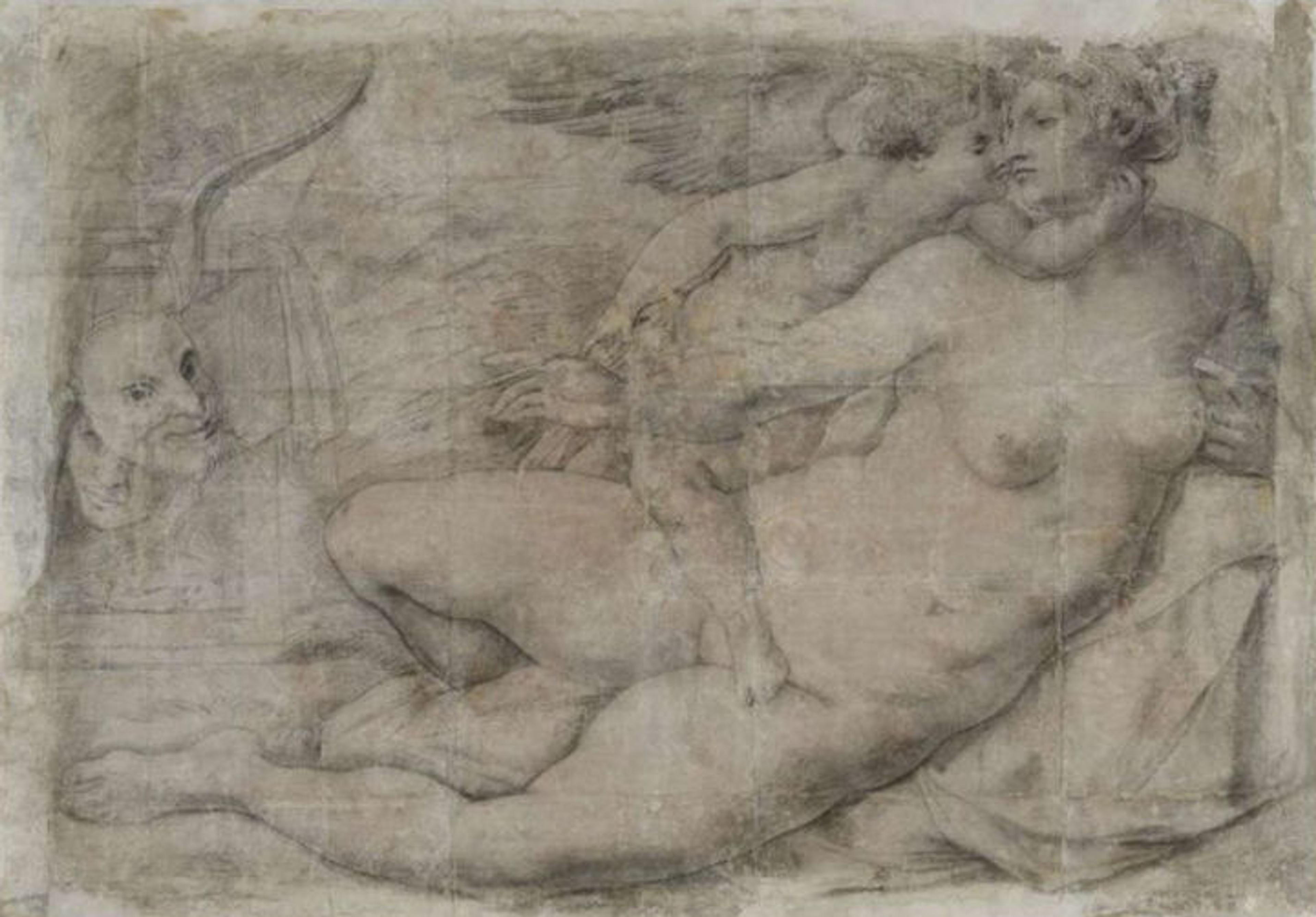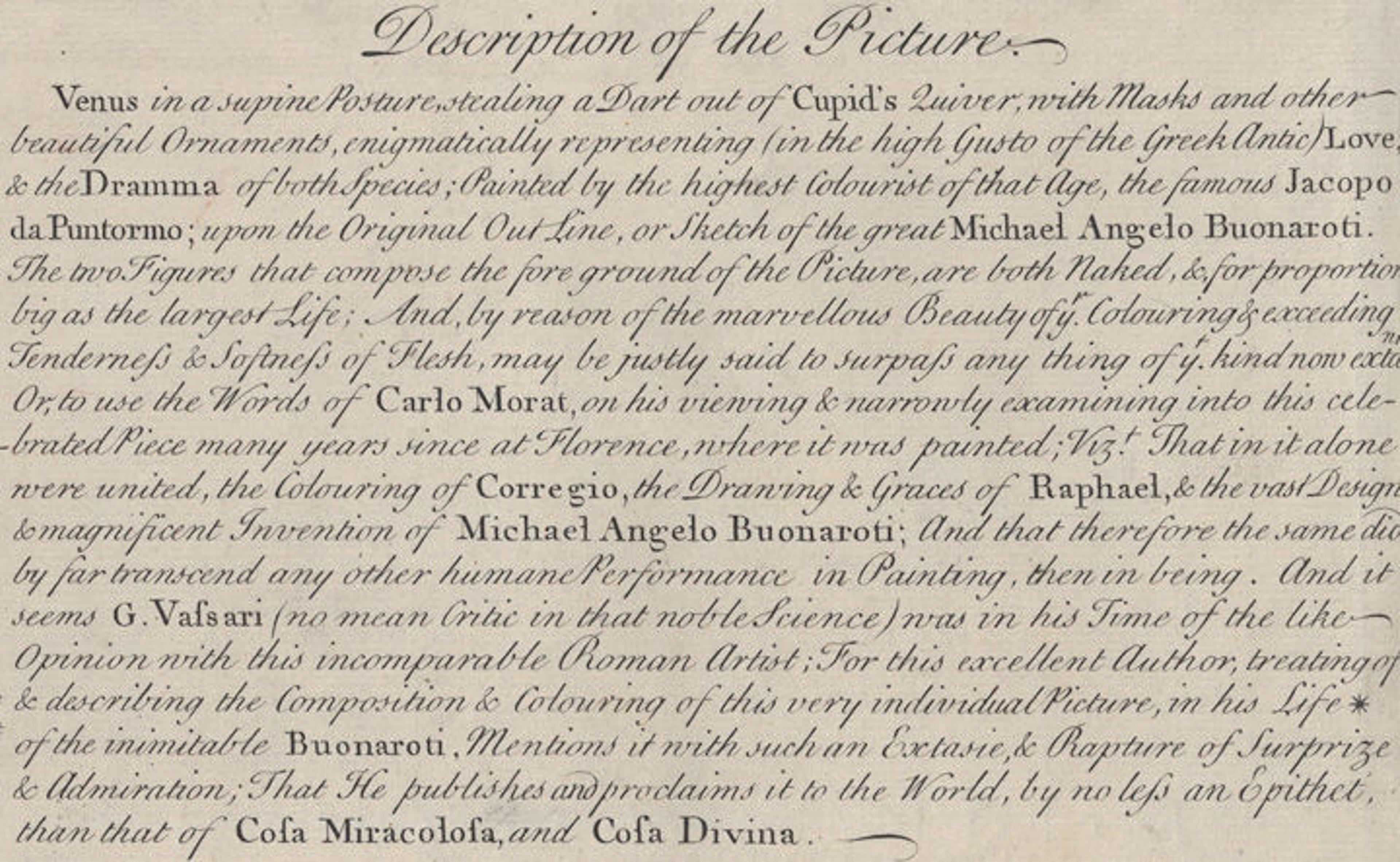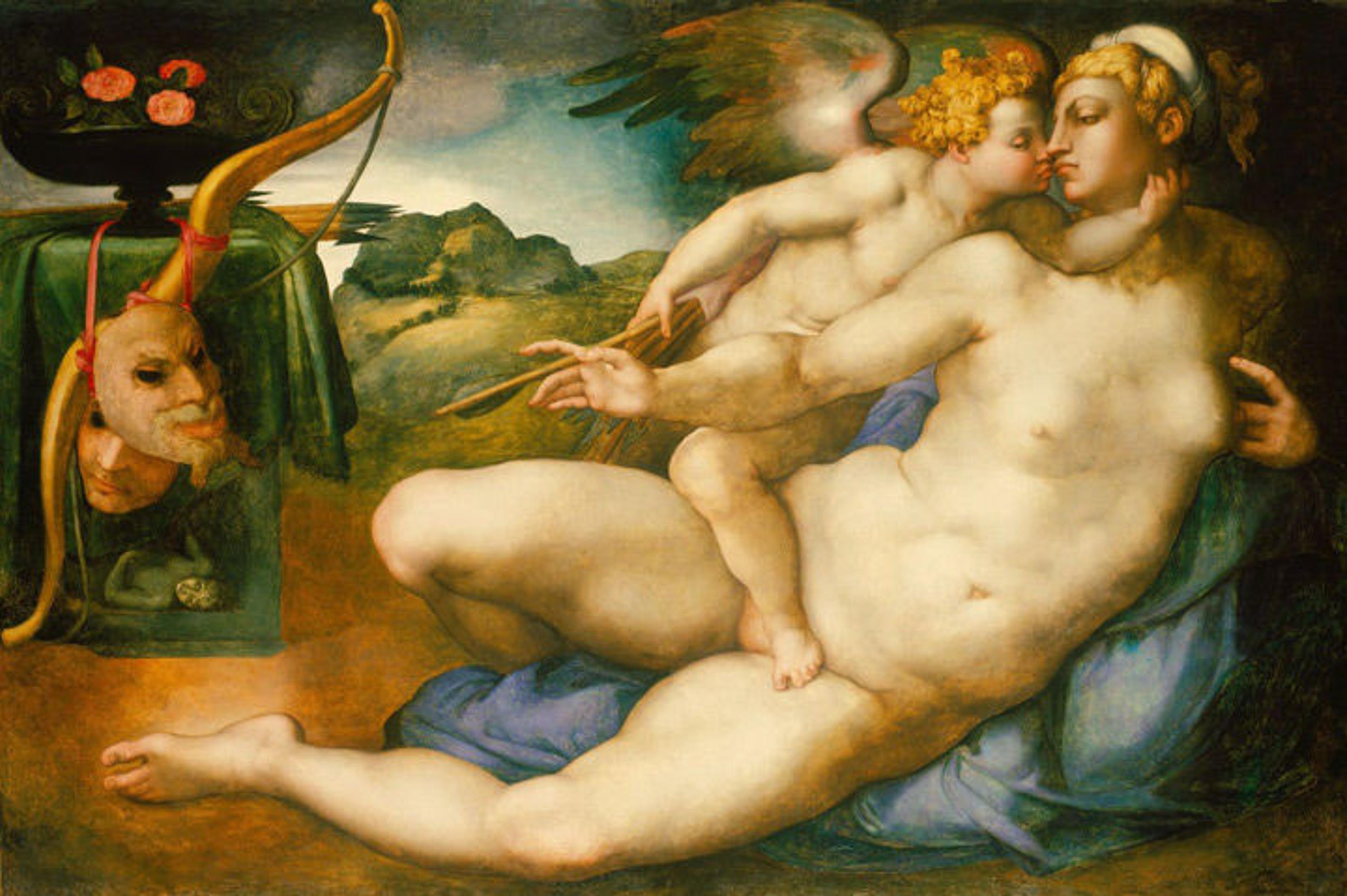
Fig. 1. Gallery view of the exhibition Michelangelo: Divine Draftsman and Designer, on view at The Met Fifth Avenue through February 12, 2018
«Currently on view in the exhibition Michelangelo: Divine Draftsman and Designer is the monumental panel of Venus Kissed by Cupid, on loan from the Galleria Colonna in Rome. The painting is not by the hand of Michelangelo himself, but is based on a design by the famous artist made in the early 1530s for a specific commission by a Florentine patron. New research by curator Carmen C. Bambach, published in the exhibition catalogue, has led to the identification of the original full-scale design (a cartoon), attributed to Michelangelo and his workshop, in the collection of the Museo Nazionale di Capodimonte in Naples (fig. 2). The cartoon served as the final model for the artist Jacopo da Pontormo, who had been entrusted with the task of executing it in oil on panel and finished it around 1533 (fig. 3).»

Fig. 2. Attributed to Michelangelo Buonarroti and workshop, over an initial sketch by the master (with later restorations). Cartoon of Venus Kissed by Cupid. Museo Nazionale di Capodimonte, Gabinetto Disegni e Stampe, Naples

Fig. 3. Jacopo da Pontormo (Italian, 1494–1557), after Michelangelo Buonarroti (Italian, 1475–1564).Cartoon of Venus Kissed by Cupid, ca. 1533. Oil on panel. Museo dell'Accademia, Florence
Pontormo's painted version of Michelangelo's Venus Kissed by Cupid enjoyed instant popularity, and documentary evidence suggests there was a high demand for copies. At least 32 versions and replicas of varying sizes and quality were created over the following decades. Among them, several have the exact same measurements and scale as the original and were seemingly made through access to the surviving cartoon. Often done by well-known artists—such as the copy in our exhibition executed by Michele Tosini (called Michele di Ridolfo del Ghirlandaio, 1503–1577)—most of these to-scale copies were incorporated into renowned Italian collections. By the 1730s, however, at least two of these panels had made their way to England, and one of them soon became available on the art market.
Rather than being sold by a dealer in a private transaction, or at auction, the panel was offered through a public raffle advertised beginning in December 1734, to be held on March 29, 1735, at Essex House on the Strand. Fifty raffle tickets were sold at a price of 10 guineas per ticket, guaranteeing the joint owners 500 guineas in profit—which excluded the proceeds gained through ticket sales for the pre-sale viewings held at Essex House every day (except Sundays and holy days) from 11:00 am till 2:00 pm.

Fig. 4. Raffle ticket for the painting of Venus and Cupid after Michelangelo (detail view of the terms of the raffle), 1734. Etching, additions in the text in pen and ink, sheet: 13 3/4 x 8 11/16 in. (35 x 22 cm). The Metropolitan Museum of Art, New York, The Elisha Whittelsey Fund, The Elisha Whittelsey Collection, 1959 (59.508.100)

Fig. 5. Detail view of the raffle ticket (59.508.100) showing Carlo Maratta's description of the painting
At least two of the original fifty raffle tickets survive, one of which is in The Met collection. The ticket includes the condition of the raffle (fig. 4), an elaborate description of the picture (fig. 5), and an etched illustration (fig. 6), which reveal that the owners supposed, or at least presented it to be the original panel by Jacopo da Pontormo. To add force to their argument, they invoked the words of the painter Carlo Maratta (1625–1713), who had supposedly inspected the panel for its authenticity, as well as the description of the artist and biographer Giorgio Vasari (1511–1574), who had mentioned it "with such an Extasie & Rapture of Surprize & Admiration" in his biography of Michelangelo as a "Cosa Miracolosa" and "Cosa Divina" ("a miraculous and divine thing").

Fig. 6. Gerard Vandergucht (British, 1696–1776), after Giorgio Vasari (Italian, 1511–1574), after Michelangelo Buonarroti (Italian, 1475–1564). Venus Kissed by Cupid, 1734. Etching, additions in the text in pen and ink, sheet: 13 3/4 x 8 11/16 in. (35 x 22 cm). The Metropolitan Museum of Art, New York, The Elisha Whittelsey Fund, The Elisha Whittelsey Collection, 1959 (59.508.100)
Vasari's ecstasy in mentioning the panel was not entirely selfless, since he was one of the many artists who had painted his own copies after the original composition by using Michelangelo's cartoon. A fact unknown to the 18th-century sellers was that the panel offered in the London raffle was actually by his hand (fig. 7).

Fig. 7. Giorgio Vasari (Italian, 1511–1574), after Michelangelo Buonarroti (Italian, 1475–1564). Venus Kissed by Cupid, ca. 1543. Oil on panel. The Royal Collection, King's Drawing Room, Kensington Palace, London
A second surviving raffle ticket, in the collection of the British Museum, carries the number 48, which suggests that interest in the raffle was high, and all or nearly all tickets were sold. Later sources reveal, however, that the raffle never actually took place. Likely at some point during the viewing period—between December 1734 and March 29, 1735—the Mannerist panel had caught the attention of none other than Queen Caroline (1683–1737), and it was subsequently bought by King George II (1683–1760) for the Royal Collection, where it remains to this day. We do not know whether the 50 unlucky subscribers were remunerated when their chance of owning a work of art conceived by Michelangelo was taken from them.
Related Links
Michelangelo: Divine Draftsman and Designer, on view at The Met Fifth Avenue through February 12, 2018
Read more blog posts in this exhibition's Now at The Met series.
Purchase a copy of the exhibition catalogue, written by exhibition curator Carmen C. Bambach, in The Met Store.